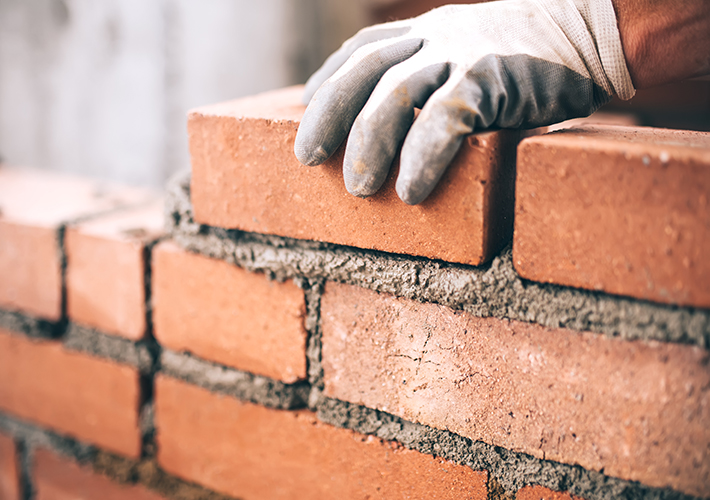
Holding It Together with Standards
Substances that stick or hold things together vary as much as the materials or things they join.
Think of the sticky note, eggs to bind a meatball, or a syringe full of Crazy Glue. Researchers believe that as far back as 200,000 years ago, Neandertals were using birch bark to produce tar, while the ancient Egyptians made nails to join wooden parts around 3,400 BCE.
As simple or as complex as materials and chemical compounds today can be, many things hold or stick other things together. Three such items include adhesives to back things, fasteners to connect structural pieces, and mortars and grout to divide and hold tile and masonry in place. Three corresponding ASTM International committees develop and maintain standards for these products, from ingredients to testing properties and performance.
Adhesives
Responsible for about 125 standards used with wood, metal, and plastic, the work of the decades-old adhesives committee (D14) helps guide product design and assure quality.
The committee’s standards include:
- a guide for classifying and specifying adhesives (D4800);
- broad, property-related tests such as those for adhesive viscosity (D1084) and peel resistance (D6862); and
- a practice for determining strength development of adhesive bonds (D1144).
These standards help ensure that the right adhesive is chosen for its purpose, and that it will perform as expected, ultimately holding this and that together.
ALSO: Standards for the Roads You Drive
For laminated wood used in diverse applications both outside and inside, the test method for strength properties of adhesive bonds in shear by compression loading (D905) provides a test to determine these attributes under specific conditions. A specification for adhesives for structural laminated wood products for use under exterior (wet use) exposure conditions (D2559) covers adhesives to bond wood for marine use, such as boats — or other places where a waterproof, high-strength, adhesive bond would be required.
 Adhesives for marine wood provide a high-strength, waterproof bond.
Adhesives for marine wood provide a high-strength, waterproof bond.
Other D14 standards address adhesives that are used with metal, including tests for tensile properties of adhesive bonds (D897) and peel resistance (D1876), as well as a practice for the effect of moisture and temperature on adhesive bonds (D897). And for plastics, the practices for atmospheric exposure of adhesive-bonded joints and structures (D1828) guides the exposure of such joints and structures to natural environments.
Fasteners
Hundreds of millions of fasteners are made to ASTM International standards each year, and the committee on fasteners (F16) takes the lead in this area.
One significant standard from the committee combines several types of structural bolts — along with nuts and washers — into one standard. [It is called the specification for high strength structural bolts and assemblies, steel and alloy steel, heat treated, inch dimensions 120 ksi and 150 ksi minimum tensile strength, and metric dimensions 830 mpa and 1040 mpa minimum tensile strength (F3125/F3125M)]. The standard wraps chemical, physical, and mechanical requirements for quenched and tempered bolts designated by grade.
Since the publication of F3125, the responsible subcommittee on steel bolts, nuts, rivets, and washers (F16.02) continues to refine the standard to ensure that it reflects any changes needed by the marketplace.
Other F16 subcommittees address test methods (F16.01), coatings on fasteners (F16.03), nonferrous fasteners (F16.04), driven and other fasteners (F16.05), and quality assurance provisions (F16.93).
Masonry Mortars and Grouts
When thinking about mortar and grout — substances essential to holding bricks or blocks together (and for that familiar in-between ingredient in a tile floor or wall) — standards from the committee on mortars and grouts for unit masonry (C12) play a part.
For example, the specifications for mortar for unit masonry (C270) and for masonry grout (C476) provide property and proportion information. The mortar specification covers four types of mortar, while the masonry grout specification includes proportions and strength requirements.
Other significant standards from the committee include the test for preconstruction and construction evaluation of mortars for plain and reinforced unit masonry (C780), which establishes overall performance characteristics for the mortar system. Various tests help the user to understand consistency, water content, air content, compressive strength, and more.
The committee is also responsible for the method for sampling and testing grout (C1019), which includes both field and laboratory sampling and compression testing used in masonry construction. The standard notes that the test helps in selecting grout proportions through test value comparison or as a quality control test for uniformity of group preparation. In addition, the method calls for testing specimens for absorption in conditions similar to the ones grout will have in actual use.
READ MORE: A Partnership to Advance Concrete
 SN Home
SN Home Archive
Archive Advertisers
Advertisers Masthead
Masthead RateCard
RateCard Subscribe
Subscribe Email Editor
Email Editor